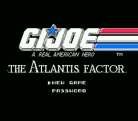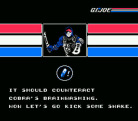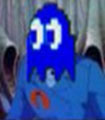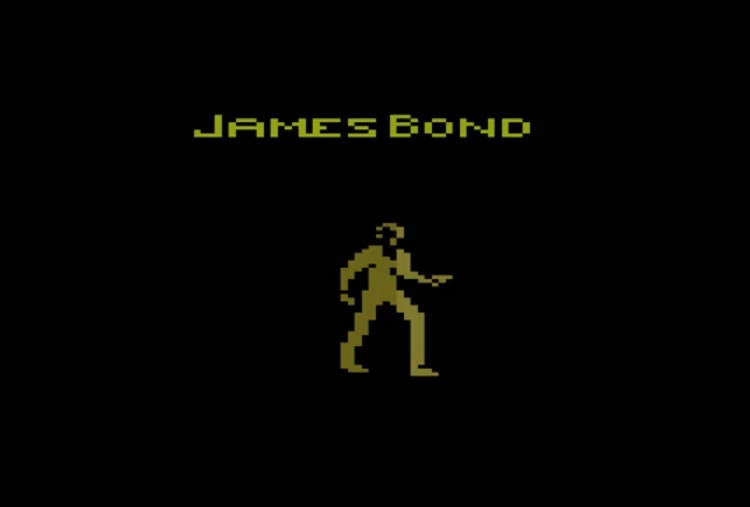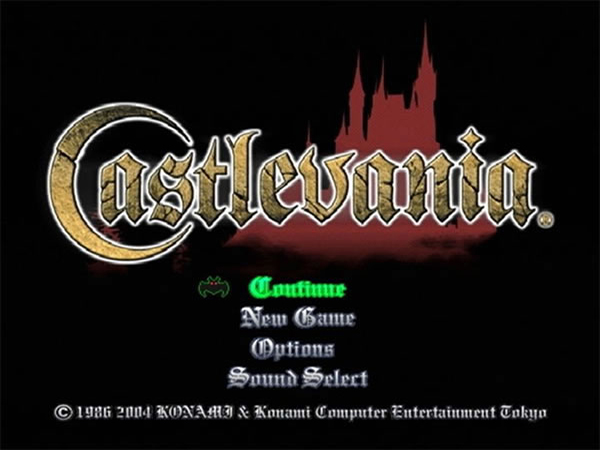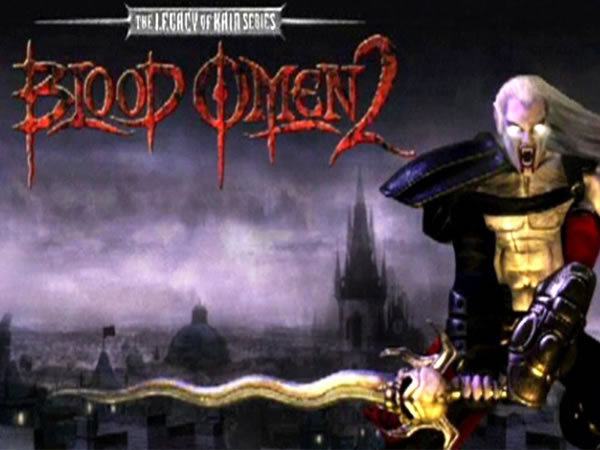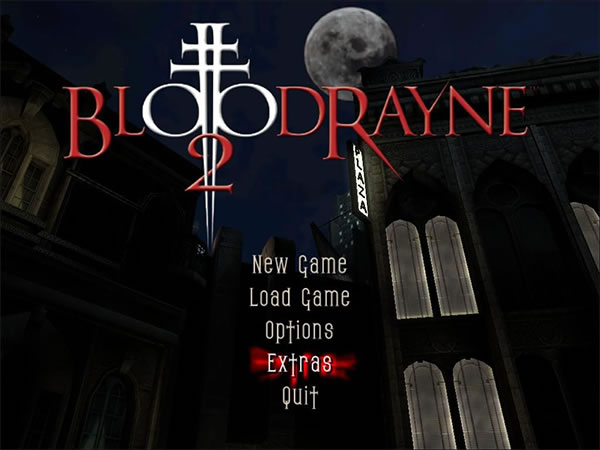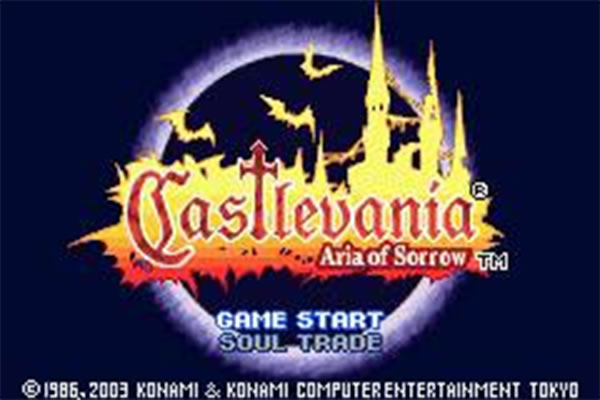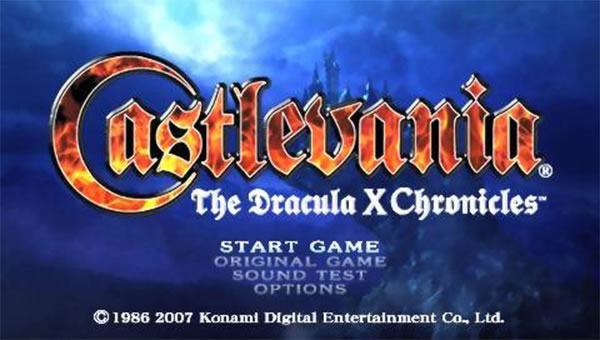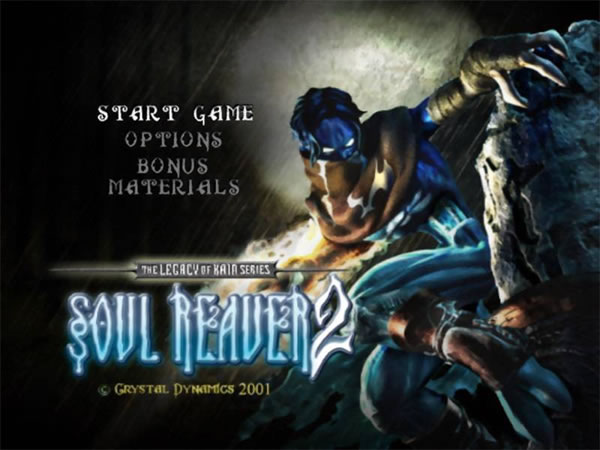- CLASSIC MAGAZINES
- REVIEW CREW
A show recapping what critics thought back
when classic games first came out! - NEXT GENERATION'S BEST & WORST
From the worst 1-star reviews to the best
5-stars can offer, this is Next Generation! - NINTENDO POWER (ARCHIVE)
Experience a variety of shows looking at the
often baffling history of Nintendo Power! - MAGAZINE RETROSPECTIVE
We're looking at the absolutely true history of
some of the most iconic game magazines ever! - SUPER PLAY'S TOP 600
The longest and most ambitious Super NES
countdown on the internet! - THEY SAID WHAT?
Debunking predictions and gossip found
in classic video game magazines! - NEXT GENERATION UNCOVERED
Cyril is back in this spin-off series, featuring the
cover critic review the art of Next Generation! - HARDCORE GAMER MAGAZING (PDF ISSUES)
Download all 36 issues of Hardcore Gamer
Magazine and relive the fun in PDF form!
- REVIEW CREW
- ELECTRONIC GAMING MONTHLY
- ELECTRONIC GAMING MONTHLY RANKS
From Mario to Sonic to Street Fighter, EGM
ranks classic game franchises and consoles! - ELECTRONIC GAMING MONTHLY BEST & WORST
Counting down EGM’s best and worst reviews
going year by year, from 1989 – 2009! - ELECTRONIC GAMING BEST & WORST AWARDS
11-part video series chronicling the ups and
downs of EGM’s Best & Worst Awards!
- ELECTRONIC GAMING MONTHLY RANKS
- GAME HISTORY
- GAME OVER: STORY BREAKDOWNS
Long-running series breaking down game
stories and analyzing their endings! - A BRIEF HISTORY OF GAMING w/ [NAME HERE]
Real history presented in a fun and pithy
format from a variety of game historians! - THE BLACK SHEEP
A series looking back at the black sheep
entries in popular game franchises! - INSTANT EXPERT
Everything you could possibly want to know
about a wide variety of gaming topics! - FREEZE FRAME
When something familiar happens in the games
industry, we're there to take a picture! - I'VE GOT YOUR NUMBER
Learn real video game history through a series
of number-themed episodes, starting at zero! - GREAT MOMENTS IN BAD ACTING
A joyous celebration of some of gaming's
absolute worst voice acting!
- GAME OVER: STORY BREAKDOWNS
- POPULAR SHOWS
- DG NEWS w/ LORNE RISELEY
Newsman Lorne Riseley hosts a regular
series looking at the hottest gaming news! - REVIEW REWIND
Cyril replays a game he reviewed 10+ years
ago to see if he got it right or wrong! - ON-RUNNING FEUDS
Defunct Games' longest-running show, with
editorials, observations and other fun oddities! - DEFUNCT GAMES QUIZ (ARCHIVE)
From online quizzes to game shows, we're
putting your video game knowledge to the test!- QUIZ: ONLINE PASS
Take a weekly quiz to see how well you know
the news and current gaming events! - QUIZ: KNOW THE GAME
One-on-one quiz show where contestants
find out if they actually know classic games! - QUIZ: THE LEADERBOARD
Can you guess the game based on the classic
review? Find out with The Leaderboard!
- QUIZ: ONLINE PASS
- DEFUNCT GAMES VS.
Cyril and the Defunct Games staff isn't afraid
to choose their favorite games and more! - CYRIL READS WORLDS OF POWER
Defunct Games recreates classic game
novelizations through the audio book format!
- DG NEWS w/ LORNE RISELEY
- COMEDY
- GAME EXPECTANCY
How long will your favorite hero live? We crunch
the numbers in this series about dying! - VIDEO GAME ADVICE
Famous game characters answer real personal
advice questions with a humorous slant! - FAKE GAMES: GUERILLA SCRAPBOOK
A long-running series about fake games and
the people who love them (covers included)! - WORST GAME EVER
A contest that attempts to create the worst
video game ever made, complete with covers! - LEVEL 1 STORIES
Literature based on the first stages of some
of your favorite classic video games! - THE COVER CRITIC
One of Defunct Games' earliest shows, Cover
Critic digs up some of the worst box art ever! - COMMERCIAL BREAK
Take a trip through some of the best and
worst video game advertisements of all time! - COMIC BOOK MODS
You've never seen comics like this before.
A curious mix of rewritten video game comics!
- GAME EXPECTANCY
- SERIES ARCHIVE
- NINTENDO SWITCH ONLINE ARCHIVE
A regularly-updated list of every Nintendo
Switch Online release, plus links to review! - PLAYSTATION PLUS CLASSIC ARCHIVE
A comprehensive list of every PlayStation
Plus classic release, including links! - RETRO-BIT PUBLISHING ARCHIVE
A regularly-updated list of every Retro-Bit
game released! - REVIEW MARATHONS w/ ADAM WALLACE
Join critic Adam Wallace as he takes us on a
classic review marathon with different themes!- DEFUNCT GAMES GOLF CLUB
Adam Wallace takes to the links to slice his way
through 72 classic golf game reviews! - 007 IN PIXELS
Adam Wallace takes on the world's greatest spy
as he reviews 15 weeks of James Bond games! - A SALUTE TO VAMPIRES
Adam Wallace is sinking his teeth into a series
covering Castlevania, BloodRayne and more! - CAPCOM'S CURSE
Adam Wallace is celebrating 13 days of Halloween
with a line-up of Capcom's scariest games! - THE FALL OF SUPERMAN
Adam Wallace is a man of steel for playing
some of the absolute worst Superman games! - THE 31 GAMES OF HALLOWEEN
Adam Wallace spends every day of October afraid
as he reviews some of the scariest games ever! - 12 WEEKS OF STAR TREK
Adam Wallace boldly goes where no critic has
gone before in this Star Trek marathon!
- DEFUNCT GAMES GOLF CLUB
- DAYS OF CHRISTMAS (ARCHIVE)
Annual holiday series with themed-episodes
that date all the way back to 2001!- 2015: 30 Ridiculous Retro Rumors
- 2014: 29 Magazines of Christmas
- 2013: 29 Questionable Power-Ups of Christmas
- 2012: 34 Theme Songs of Christmas
- 2011: 32 Game Endings of Christmas
- 2010: 31 Bonus Levels of Christmas
- 2009: 30 Genres of Christmas
- 2008: 29 Controls of Christmas
- 2007: 34 Cliches of Christmas
- 2006: 33 Consoles of Christmas
- 2005: 32 Articles of Christmas
- 2004: 31 Websites of Christmas
- 2003: 29 Issues of Christmas
- 2002: 28 Years of Christmas
- 2001: 33 Days of Christmas
- NINTENDO SWITCH ONLINE ARCHIVE
- REVIEW ARCHIVE
- FULL ARCHIVE
G.I. Joe: The Atlantis Factor
Capcom took the reigns of the G.I.Joe video game license from Taxan who made their excellent Joe game only one year earlier. Surprisingly, not only did Capcom keep many of the controls intact, but they even lifted sprites pixel-by-pixel from the original effort, thus creating a consistent feel and look for both games. In this regard, the company deserves congratulating for humbling itself to an undoubtedly inferior developing company to create a seamless transition from the original to the sequel. Capcom, however, does put its individual stamp on the game by inserting the trademark quality that has made many of their past titles memorable - i.e. high difficulty.
In typical Capcom fashion, players are rewarded for their ability to painstakingly memorize obstacle locations and plan their course accordingly, something familiar to fans of games like Mega Man or Ghosts & Goblins. But what makes The Atlantis Factor especially harder than its Taxan counterpart lies in what is subtracted from the latter title. To start, you begin with only one playable character (Hawk) until you find others who can then be toggled during gameplay; no longer do characters have grenades to rely upon when all ammo is gone; there is no vertical shooting; vehicles cannot be used; players cannot farm random power-ups from renewed enemies. Resources are much lower, and much of your success is determined by how well you budget those resources. And while Capcom does add the benefit of collecting radio transceivers that call for mid-battle backup, these radios disappear with each continue and cannot be found again without starting over. Another minor gripe is that some boss or mini-boss battles are a matter of outlasting your opponent, but there are a good many that can be worked out through timing strategies. To summarize the game's difficulty more succinctly, you're going to have to earn that victory screen. Defeating the evil forces of Cobra, that "ruthless terrorist organization determined to rule the world", will prove no mean feat.

In fairness, Capcom does merely subtract from the 1990 Taxan effort; there are a few flourishes here and there. A map provides the player with several different routes to reach mandatory destinations; you need not complete every route, though it is advisable to use easier levels to power up your Joes. Additionally, you are rewarded with new weapons as you creep closer to Cobra Commander, but finding the right one during a firefight becomes more confusing as you frantically hit the "select" button to settle on your choice. Since bullets are a rare commodity on some boards, you might find yourself holding four empty rifles before finding your reliable fists. So, in short, the add-ons, while seeming to help, can actually trip you up.
The story itself is a typical cartoony plot similar to those that made the G.I.Joe television series so colorful and, at most times, rather ridiculous (especially the one animated by DIC that is contemporary with the production of this game). The enemy leader, Cobra Commander, has been resurrected using technology from the ancient and heretofore lost city of Atlantis. Cobra, now aided by the arcane secrets of the Atlanteans, is now poised to take over the world. It seems absurd, but before you scoff at the idea of an evil organization raising Atlantis to harness it as a source of unlimited power, it may be useful to note that it is widely believed (and probably exaggerated) that the Nazis ordered an expedition to find Atlantis in 1938 under the direction of SS officer, Heinrich Himmler. Since the Nazis had infamously delved in occult archeology innumerable times, this story, though likely to be myth, is intriguing enough to justify the plots of not only The Atlantis Factor, but the brilliant adventure game Indiana Jones and The Fate of Atlantis which also came out in 1992. Ultimately, the Atlantis story is a nice contrivance and excuse to have your soldiers use seemingly anachronistic weapons amongst luxuriant and interesting backgrounds filled with Doric columns and partly submerged cities.
While the unique backgrounds are nice, their coloring seems a bit ho-hum and many levels look too similar to contrast cleanly against each other. You will play several levels and feel like you've been there before. Enemy soldiers also are colored rather blandly with some of them washed in one hue without a true representation of their plastic counterparts. In this regard, this game is less detail-oriented than the Taxan one, but just when you think Capcom is being lazy, they show that they too understood the G.I.Joe brand.
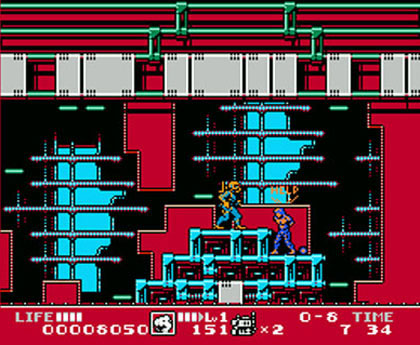
All but one G.I.Joe: A Real American Hero action figure since 1982 has come with a file card, and to the credit of the game's development team, the writers must have read these dossiers carefully in preparation. The knowledge is evinced in several places in the game, but perhaps most impressively in the case of a non-playable character named "Spirit" who can be called upon mid-battle to heal a character. Since there were no G.I.Joe medics for sale at the time of the game's publication, the writers relied on one small detail from the Spirit's file card to make up for this lack. It states that the Native American tracker carries with him a "Shaman's medicine bag." It may not be a big deal to the casual player, put such attention to detail is a testimony to the professionalism of Capcom to get it right.
G.I.Joe: The Atlantis Factor came late in the life on the NES and so it went by largely unnoticed by those who were well into discovering the joys of 16-bit systems. Like so many titles for the NES at this time, it may have been rushed, not only by Nintendo but also by Hasbro for whom timing was essential so that the game did not surpass the shelf-life of the toys. The game is impressive at points, but not brilliant. It concludes with the promise "to be continued", but that promise will likely remain unfulfilled as EA currently owns the rights to G.I.Joe games.
In typical Capcom fashion, players are rewarded for their ability to painstakingly memorize obstacle locations and plan their course accordingly, something familiar to fans of games like Mega Man or Ghosts & Goblins. But what makes The Atlantis Factor especially harder than its Taxan counterpart lies in what is subtracted from the latter title. To start, you begin with only one playable character (Hawk) until you find others who can then be toggled during gameplay; no longer do characters have grenades to rely upon when all ammo is gone; there is no vertical shooting; vehicles cannot be used; players cannot farm random power-ups from renewed enemies. Resources are much lower, and much of your success is determined by how well you budget those resources. And while Capcom does add the benefit of collecting radio transceivers that call for mid-battle backup, these radios disappear with each continue and cannot be found again without starting over. Another minor gripe is that some boss or mini-boss battles are a matter of outlasting your opponent, but there are a good many that can be worked out through timing strategies. To summarize the game's difficulty more succinctly, you're going to have to earn that victory screen. Defeating the evil forces of Cobra, that "ruthless terrorist organization determined to rule the world", will prove no mean feat.

In fairness, Capcom does merely subtract from the 1990 Taxan effort; there are a few flourishes here and there. A map provides the player with several different routes to reach mandatory destinations; you need not complete every route, though it is advisable to use easier levels to power up your Joes. Additionally, you are rewarded with new weapons as you creep closer to Cobra Commander, but finding the right one during a firefight becomes more confusing as you frantically hit the "select" button to settle on your choice. Since bullets are a rare commodity on some boards, you might find yourself holding four empty rifles before finding your reliable fists. So, in short, the add-ons, while seeming to help, can actually trip you up.
The story itself is a typical cartoony plot similar to those that made the G.I.Joe television series so colorful and, at most times, rather ridiculous (especially the one animated by DIC that is contemporary with the production of this game). The enemy leader, Cobra Commander, has been resurrected using technology from the ancient and heretofore lost city of Atlantis. Cobra, now aided by the arcane secrets of the Atlanteans, is now poised to take over the world. It seems absurd, but before you scoff at the idea of an evil organization raising Atlantis to harness it as a source of unlimited power, it may be useful to note that it is widely believed (and probably exaggerated) that the Nazis ordered an expedition to find Atlantis in 1938 under the direction of SS officer, Heinrich Himmler. Since the Nazis had infamously delved in occult archeology innumerable times, this story, though likely to be myth, is intriguing enough to justify the plots of not only The Atlantis Factor, but the brilliant adventure game Indiana Jones and The Fate of Atlantis which also came out in 1992. Ultimately, the Atlantis story is a nice contrivance and excuse to have your soldiers use seemingly anachronistic weapons amongst luxuriant and interesting backgrounds filled with Doric columns and partly submerged cities.
While the unique backgrounds are nice, their coloring seems a bit ho-hum and many levels look too similar to contrast cleanly against each other. You will play several levels and feel like you've been there before. Enemy soldiers also are colored rather blandly with some of them washed in one hue without a true representation of their plastic counterparts. In this regard, this game is less detail-oriented than the Taxan one, but just when you think Capcom is being lazy, they show that they too understood the G.I.Joe brand.

All but one G.I.Joe: A Real American Hero action figure since 1982 has come with a file card, and to the credit of the game's development team, the writers must have read these dossiers carefully in preparation. The knowledge is evinced in several places in the game, but perhaps most impressively in the case of a non-playable character named "Spirit" who can be called upon mid-battle to heal a character. Since there were no G.I.Joe medics for sale at the time of the game's publication, the writers relied on one small detail from the Spirit's file card to make up for this lack. It states that the Native American tracker carries with him a "Shaman's medicine bag." It may not be a big deal to the casual player, put such attention to detail is a testimony to the professionalism of Capcom to get it right.
G.I.Joe: The Atlantis Factor came late in the life on the NES and so it went by largely unnoticed by those who were well into discovering the joys of 16-bit systems. Like so many titles for the NES at this time, it may have been rushed, not only by Nintendo but also by Hasbro for whom timing was essential so that the game did not surpass the shelf-life of the toys. The game is impressive at points, but not brilliant. It concludes with the promise "to be continued", but that promise will likely remain unfulfilled as EA currently owns the rights to G.I.Joe games.
HOME |
CONTACT |
NOW HIRING |
WHAT IS DEFUNCT GAMES? |
NINTENDO SWITCH ONLINE |
RETRO-BIT PUBLISHING
Retro-Bit |
Switch Planet |
The Halcyon Show |
Same Name, Different Game |
Dragnix |
Press the Buttons
Game Zone Online | Hardcore Gamer | The Dreamcast Junkyard | Video Game Blogger
Dr Strife | Games For Lunch | Mondo Cool Cast | Boxed Pixels | Sega CD Universe | Gaming Trend
Game Zone Online | Hardcore Gamer | The Dreamcast Junkyard | Video Game Blogger
Dr Strife | Games For Lunch | Mondo Cool Cast | Boxed Pixels | Sega CD Universe | Gaming Trend
Copyright © 2001-2025 Defunct Games
All rights reserved. All trademarks are properties of their respective owners.
All rights reserved. All trademarks are properties of their respective owners.







